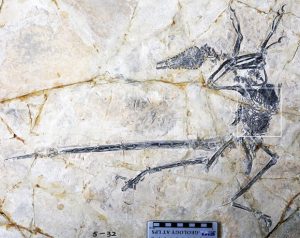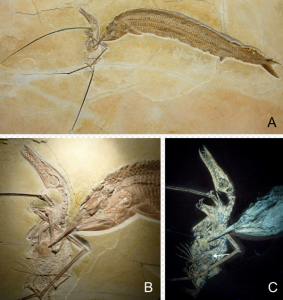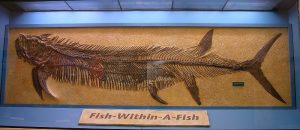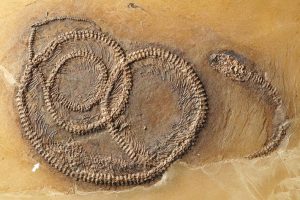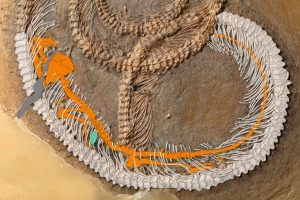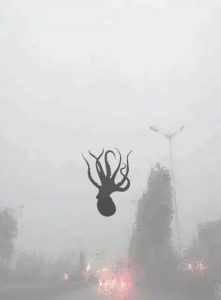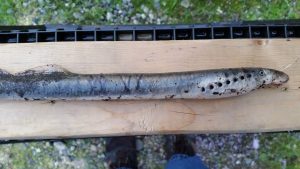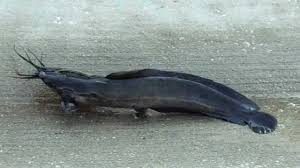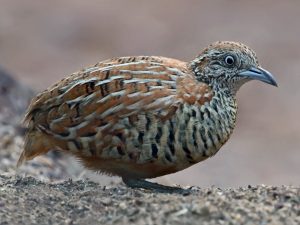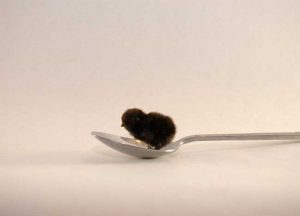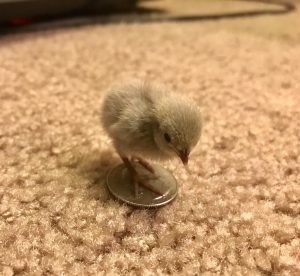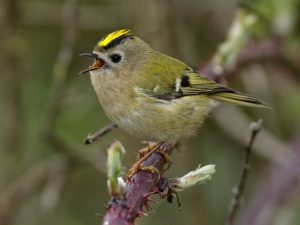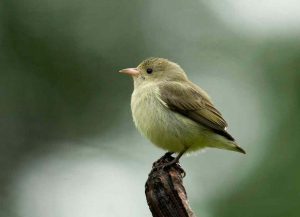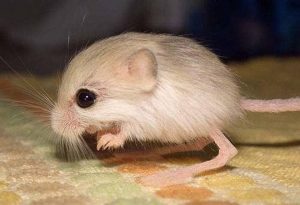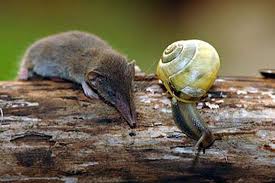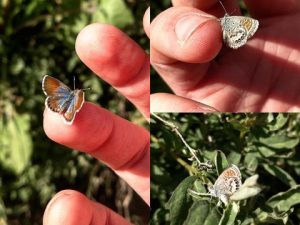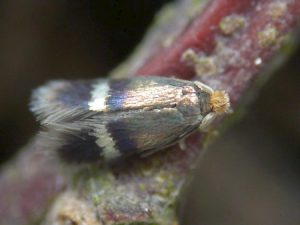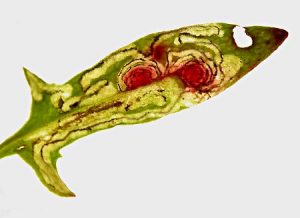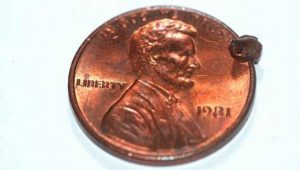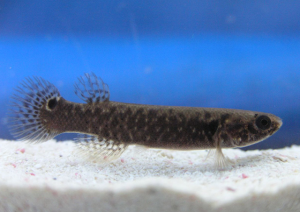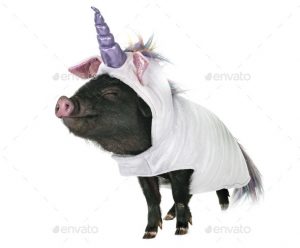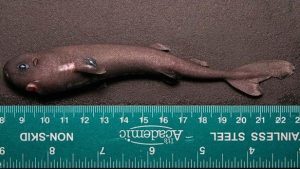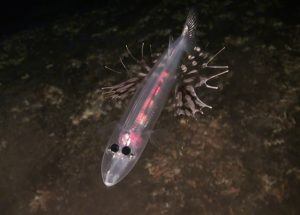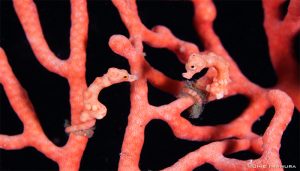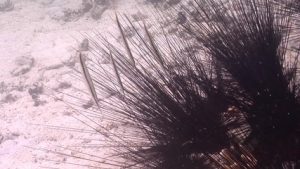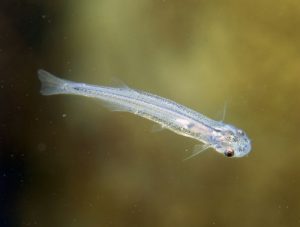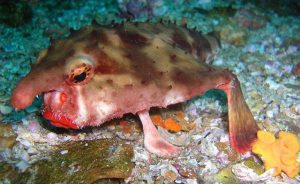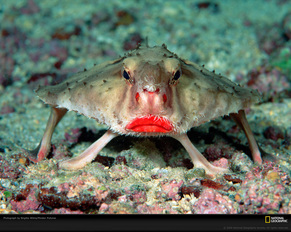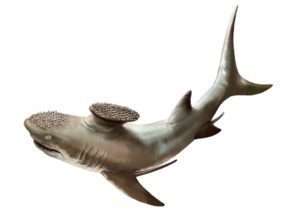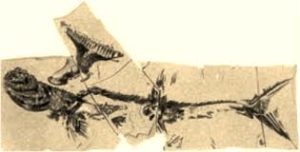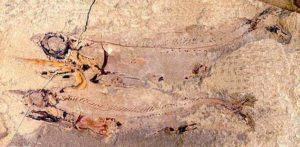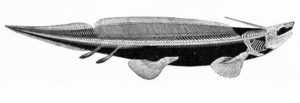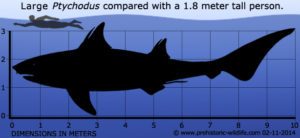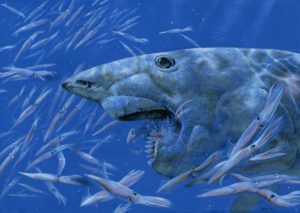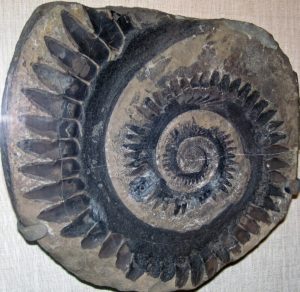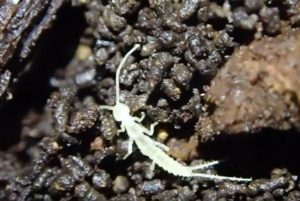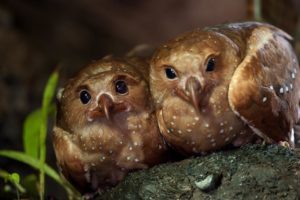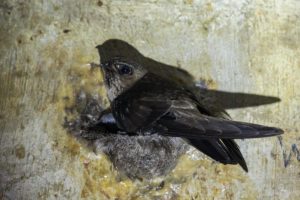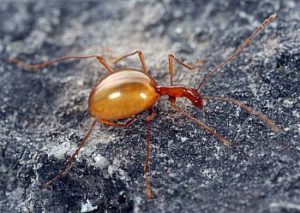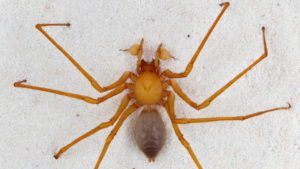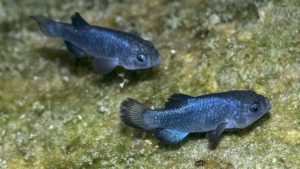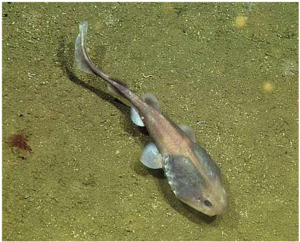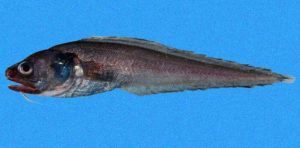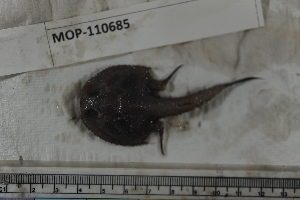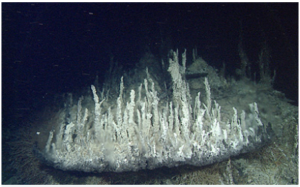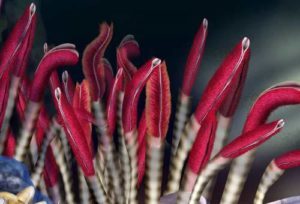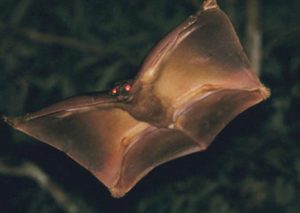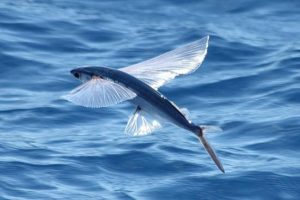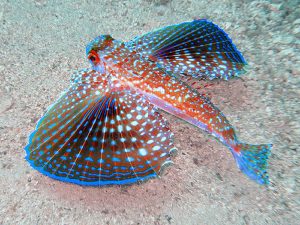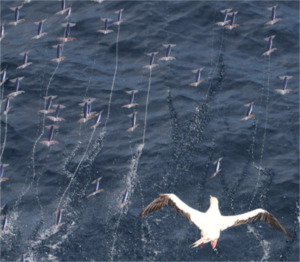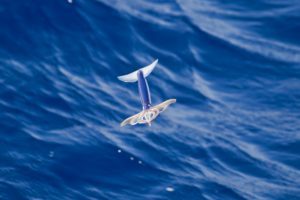Podcast: Play in new window | Download (Duration: 15:38 — 15.9MB)
This week let’s look at some (mostly) smaller mystery animals associated with water! Thanks to Richard J., Janice, and Simon for the suggestions!
Further reading:
The black-striped pipefish. Also, that guy has REALLY BIG FINGERTIPS:
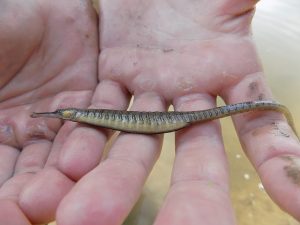
The Pondicherry shark, not looking very happy:
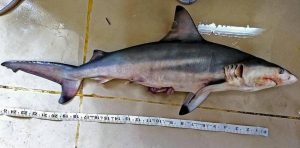
A ratfish. What BIG EYES you have!
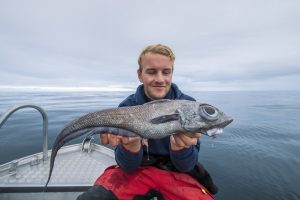
The hoodwinker sunfish, weird and serene:
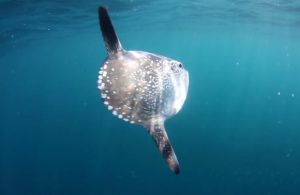
The Montauk monster, looking very sad and dead:
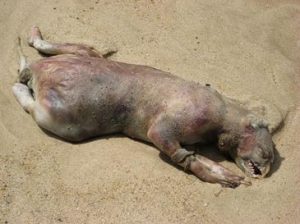
Show transcript:
Welcome to Strange Animals Podcast. I’m your host, Kate Shaw.
Let’s finish off the year with an episode about a few mystery animals, specifically a few mystery animals associated with water. Thanks to Richard, Janice, and Simon for the suggestions!
We’ll start off with a mystery suggested by Richard J, but not the Richard J. who is my brother. A different Richard J. Apparently half the people who listen to my podcast are named Richard, and that’s just fine with me.
Richard wanted to know if there are there such things as freshwater seahorses. We’ve talked about seahorses before in episode 130, but seahorses are definitely marine animals. That means they only live in the ocean. But Richard said he’d heard about a population of seahorses native to Lake Titicaca in Bolivia, which is in South America. I put it on my suggestions list, but Richard was on the case. He sent me a link to an article looking into the mystery, which got me really intrigued, so I bumped it to the top of my list. Because I can do that. It’s my podcast.
Freshwater seahorses are supposedly known in the Mekong River and in Lake Titicaca, and sometimes you’ll see reference to the scientific name Hippocampus titicacanesis. But that’s actually not an official scientific name. There’s no type specimen and no published description. Hippocampus is the generic name for many seahorse species, but like I said, they’re all marine animals and there’s no evidence that any live in freshwater at all. Another scientific name supposedly used for the Mekong freshwater seahorse is Hippocampus aimei, but that’s a rejected name for a seahorse named Hippocampus spinosissimus, the hedgehog seahorse. It does live in parts of the Indo-Pacific Ocean, including around Australia, especially in coral reefs, and sometimes in the brackish water at the Mekong River’s mouth, but not in fresh water.
On the other hand, there’s no reason why a seahorse couldn’t adapt to freshwater living. A few of its close relatives have. There are a few species of freshwater pipefish, and in the world of aquarium enthusiasts they are actually sometimes called freshwater seahorses. The pipefish looks like a seahorse that’s been straightened out, and most of them are marine animals. But some have adapted to freshwater habitats.
This includes the black-striped pipefish, which is found off the coasts of much of Europe but which also lives in the mouths of rivers. At some point it got introduced into the Volga River and liked it so much it has started to expand into other freshwater lakes and rivers in Europe.
The pipefish is closely related to the seahorse, but while it does have bony plates like a seahorse, it’s a flexible fish. It swims more like a snake than a fish, and it can anchor itself to vegetation just like a seahorse by wrapping its tail around it. It mostly eats tiny crustaceans and newly hatched fish, since it swallows its food whole. It usually hides in vegetation until a tiny animal swims near, and then it uses its tube-shaped mouth like a straw to suck in water along with the animal. Just like the seahorse, the male pipefish has a brooding pouch and takes care of the eggs after the female deposits them in his pouch.
So where did the rumor that seahorses live in the Mekong come from? The Mekong is a river in southeast Asia that runs through at least six countries, including China, Thailand, Cambodia, and Vietnam. Parts of it are hard to navigate due to waterfalls and rapids, but it’s used as a shipping route and there are lots of people who live along the river. Like all rivers, it’s home to many interesting animals, including a type of giant softshell turtle that can grow up to six feet long, or 1.8 meters, a type of otter, a bunch of enormous fish, including three species of catfish that can grow up to almost ten feet long, or 3 meters, and a giant freshwater stingray that can grow up to 16 feet long, or 5 meters, and of course lots more animals that aren’t as big or as impressive, but which are still important to the river’s biodiversity. But there’s no evidence of seahorses anywhere throughout the Mekong’s 2700 mile length, or 4,350 km.
But there is a hint about where the rumor of a Mekong seahorse could have come from. One researcher named Heiko Bleher chased down the type specimens of the supposed Mekong seahorse in a Paris museum, which were collected in the early 20th century by a man named Roule. Roule got them in Laos from a fisherman who had nailed the dried seahorses to his fishing hut. The fisherman told Roule the seahorses were from the Mekong, but when they were further studied in 1999 Roule’s specimens were discovered to actually be specimens of Hippocampus spinosissimus and Hippocampus barbouri. Both are marine fish but do sometimes live in brackish water at the mouth of the Mekong. So the fisherman wasn’t lying, but Roule misunderstood what he meant.
As for the freshwater seahorse supposedly found in Lake Titicaca, that one’s less easy to explain. Titicaca is a freshwater lake in South America, specifically in the Andes Mountains on the border of Bolivia and Peru. It’s the largest lake in South America and is far, far above the ocean’s surface—12,507 feet above sea level, in fact, or 3,812 meters. It’s also extremely deep, 932 feet deep in some areas, or 284 meters. It’s home to many species of animal that live nowhere else in the world. Why couldn’t it be home to a freshwater seahorse too?
Titicaca was formed when a massive earthquake some 25 million years ago essentially shoved two mountains apart, leaving a gap—although technically it’s two gaps connected with a narrow strait. Over the centuries rainwater, snowmelt, and streams gradually filled the gaps, and these days five rivers and many streams from higher in the mountains feed water into the lake. Water leaves the lake by the River Desaguadero and flows into two other lakes, but those lakes aren’t connected to the sea. Sometimes they dry up completely. So Titicaca isn’t connected to the ocean and never was, and even if it was, seahorses are weak swimmers and would never be able to venture up a river 12,000 feet above sea level. Some 90% of all fish in the lake are found nowhere else in the world. There’s just simply no way a population of seahorses could have gotten into the lake in the first place, even if they could survive there.
That doesn’t mean there aren’t any freshwater seahorses out there ready to be discovered, of course. But I don’t think you’re going to find any in Lake Titicaca. And I have no idea how the rumor got started that any live there.
From a tiny seahorse let’s move on to a small shark, another topic suggested by Richard J. The Pondicherry shark grows to about 3.3 feet, or 1 meter, and once lived throughout the Indo-Pacific, especially in coastal waters. It’s considered critically endangered, but it’s so rare these days that we hardly know anything about it except that it’s harmless to humans, eats small fish and other small animals, and was once common. But until the mid-2010s, scientists were starting to worry it was already extinct. Then in 2016 two different Pondicherry sharks were photographed in two different places—and not where anyone had expected to find it. Some tourists took a photo of one in a river called the Menik and a freshwater fish survey camera caught a photo of one in the Kumbuk River. Both rivers are in Sri Lanka. Since then researchers have spotted a few more. The shark is protected, and hopefully the excitement around the shark’s rediscovery has helped people in the area learn about it so they know not to bother it. Some sharks tolerate fresh water and brackish water quite well, so it’s not surprising that the Pondicherry shark has moved into the rivers where it has less competition from commercial fishing boats.
Our next water mystery is actually not really a mystery, just a really strange-looking fish related to sharks. This one was suggested by my aunt Janice who doesn’t actually listen to the podcast but who likes to send me links to strange animal articles that she comes across on the internet. This one is called Chimaera Monstrosa, sometimes called the rat fish.
The rat fish mostly lives in the deep sea, although it’s sometimes seen in shallower water, and can grow up to 5 feet long, or 1.5 meters. It’s mostly brown but has white markings. Its body looks more or less like a regular plump shark-like fish, but it has great big round green eyes, relatively long pectoral fins, and a very long tail that tapers to a point. The tail gives it its common name, since it kind of resembles a rat’s tail. It eats whatever it can catch on the ocean floor, including crustaceans and echinoderms.
Ratfish, and other chimaeriformes, are most closely related to sharks, and like sharks they have skeletons that are made of cartilage instead of bone. Since they’re rarely seen and look really weird, every so often someone catches one and posts about it online, and then my aunt sends me a link. They are really interesting fish, though.
Simon also sent me an article about an interesting fish a while back, the hoodwinker sunfish. We talked about the sunfish, or mola mola, in episode 96. The hoodwinker sunfish, or mola tecta, was only discovered in 2017 despite its large size. So far it’s known to live in the South Pacific around New Zealand, Australia, South Africa, and Chile, but only off the southernmost parts of those countries. But in early 2019 one washed up in Southern California.
The mystery sunfish was measured at almost 7 feet long, or 2.1 meters. An intern at the University of California at Santa Barbara found it, but didn’t know what it was. But once photos of the fish were posted online, two experts from Australia recognized it immediately—but because it showed up so far out of its known range, they were cautious about IDing it from just a photo. That’s despite the fact that one of the experts, Marianne Nyegaard, was actually the person who named the species. She asked for samples and more photos, and when she got the results, it really was a hoodwinker sunfish. But what was it doing in the warm waters of the northern Pacific instead of the cold southern waters? No one knows except the sunfish.
Let’s finish with another mystery animal you may have heard of. On July 12 or 13, 2008, depending on which source you consult, three friends visited Ditch Plains Beach, two miles away from the little town of Montauk in New York state in eastern North America. It was a hot day and the beach was crowded, and when the three noticed people gathered around something, they went to look too. There they saw a weird dead animal that had obviously washed ashore. One of the three took a picture of it, which appeared in the local papers and then the local TV news along with an interview with the three. From there it went viral and was dubbed the Montauk monster.
The monster was about the size of a cat, but with shorter legs and a chunkier body, and a relatively short tail. It didn’t have much hair but it did have sharp teeth, and the front part of its skull was exposed so that it almost looked like it had a beak. Its front paws were elongated with long fingers, almost like little hands.
So what was the monster? People all over the world made guesses, everything from a sea turtle without a shell to a diseased dog or just a hoax. Some people thought it was a mutant animal that had been created in a lab on one of the nearby islands, escaped, and died trying to swim to the mainland.
But while no one knows what happened to the animal’s body, scientists have studied the photo and determined that it was probably a dead raccoon that had been washed into the ocean. The waves had tumbled the animal’s body around through the sand long enough to rub off most of its remaining fur and some of its facial features, and then it washed ashore during the next high tide. It was also somewhat bloated due to gases building up inside during decomposition. It’s the animal’s teeth and paws that made the identification possible, since both match a raccoon’s exactly. Remember that raccoons have clever front paws that help them open locking trash bins, as we learned in episode 138.
So the Montauk monster isn’t actually a mystery, except what happened to it, but don’t be discouraged. There are still lots of genuinely mysterious animals in the ocean, from misplaced sunfish to creatures no one has ever seen yet. Maybe you’ll be the one to discover them.
You can find Strange Animals Podcast online at strangeanimalspodcast.blubrry.net. That’s blueberry without any E’s. If you have questions, comments, or suggestions for future episodes, email us at strangeanimalspodcast@gmail.com. We also have a Patreon at Patreon.com/strangeanimalspodcast if you’d like to support us and get twice-monthly bonus episodes.
Thanks for listening!
